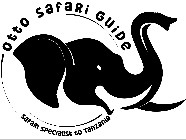Overview:
Nestled in the northeastern part of Tanzania, Mkomazi National Park stands as a testament to the country’s commitment to conservation and the preservation of its rich biodiversity. This expansive park covers an area of approximately 3,234 square kilometers and is renowned for its diverse landscapes, wildlife, and unique conservation projects. Mkomazi is a haven for nature enthusiasts, offering a captivating blend of savannahs, mountains, and acacia woodlands.
History:
Established in 1951, Mkomazi initially served as a game reserve before attaining national park status in 2006. The park has a storied history, marked by collaborative efforts between the Tanzanian government and various conservation organizations to protect and restore its ecosystems. Over the years, Mkomazi has become a symbol of successful conservation initiatives, aiming to safeguard the region’s natural heritage.
Wildlife Diversity:
Mkomazi National Park is a treasure trove of wildlife, harboring a remarkable variety of species that have adapted to its diverse habitats. The park is home to a plethora of mammals, birds, reptiles, and plants, making it a must-visit destination for those seeking an authentic African safari experience.
Notable Wildlife:
- Elephants: Mkomazi is known for its sizable elephant population, providing visitors with the chance to witness these majestic creatures in their natural habitat.
- Giraffes: The park is also home to the endangered Maasai giraffe, contributing to the conservation of this iconic species.
- African Wild Dogs: Mkomazi boasts a thriving population of African wild dogs, showcasing the park’s commitment to protecting these endangered predators.
- Lions: The grassy plains of Mkomazi provide an ideal habitat for lions, and lucky visitors may catch a glimpse of these apex predators.
- Diverse Birdlife: Bird enthusiasts will be delighted by Mkomazi’s avian diversity, with over 450 bird species recorded, including ostriches, secretary birds, and vultures.
Rhino and Hunting Dog Project:
Mkomazi National Park has been at the forefront of conservation efforts, particularly in the Rhino and Hunting Dog Project. The park actively participates in the protection and rehabilitation of the endangered black rhinoceros and African hunting dogs.
Black Rhinoceros: Mkomazi is dedicated to the conservation of the black rhinoceros, with a breeding program aimed at increasing their numbers. Visitors can witness these magnificent creatures and learn about the challenges they face in the wild.
African Hunting Dogs: The park is also involved in the protection and research of African hunting dogs, also known as African wild dogs. With a focus on understanding their behavior and habitat needs, Mkomazi is playing a crucial role in the conservation of this endangered species.
What to Do:
Mkomazi National Park offers a range of activities for visitors to immerse themselves in the natural wonders of the region.
Safari Adventures: Embark on an unforgettable safari adventure, exploring the vast landscapes and encountering the diverse wildlife that calls Mkomazi home. Knowledgeable guides lead safari excursions, providing insights into the park’s ecology and wildlife behavior.
Bird Watching: Bird enthusiasts will be captivated by the park’s rich avian life. Mkomazi is a paradise for bird watching, with opportunities to spot both resident and migratory bird species. Don’t forget your binoculars!
Conservation Tours: Take part in guided tours that delve into Mkomazi’s conservation projects. Learn about the efforts to protect rhinos and African hunting dogs, gaining a deeper understanding of the challenges and successes in preserving these endangered species.
When to Go:
The best time to visit Mkomazi National Park depends on personal preferences and the kind of experience you seek.
Dry Season (June to October): This period offers optimal game viewing as wildlife tends to congregate around water sources. The dry season provides clear skies and pleasant temperatures, enhancing the overall safari experience.
Wet Season (November to May): While the wet season brings lush vegetation and vibrant landscapes, it can make wildlife spotting a bit challenging. However, birdwatching during this time is particularly rewarding, with migratory birds adding to the park’s avian diversity.
Accommodation:
Mkomazi National Park provides accommodation options that cater to different preferences, ensuring a comfortable and immersive stay amid the wilderness.
Tented Camps: Experience the thrill of camping in the heart of nature with tented camp accommodations. These camps offer a blend of rustic charm and modern amenities, allowing visitors to connect with the surroundings.
Lodges: For those seeking a touch of luxury, lodges within and around the park provide a comfortable retreat. Enjoy well-appointed rooms, delicious cuisine, and panoramic views of the park’s landscapes.
Conservation-Focused Accommodations: Some accommodations within Mkomazi actively contribute to conservation efforts, providing visitors with an opportunity to support sustainable tourism practices.
In conclusion, Mkomazi National Park beckons adventurers and nature lovers to explore its diverse landscapes and contribute to the conservation of its precious wildlife. Whether observing rhinos, African wild dogs, or simply enjoying the breathtaking scenery, a journey to Mkomazi promises an unforgettable safari experience immersed in the heart of Tanzania’s natural beauty.
